Do you struggle with blurry vision at different distances? Progressive lenses, also known as multifocal lenses or no-line bifocals, offer a seamless solution. Unlike traditional bifocals, progressive lenses provide a smooth transition between vision zones, allowing clear vision at near, intermediate, and far distances. Discover the advantages and find the perfect pair for your needs at https://www.mozaer.com/search?q=progressive+eye+lenses, enhancing your visual comfort and quality of life.
【Understanding Progressive Eye Lenses】
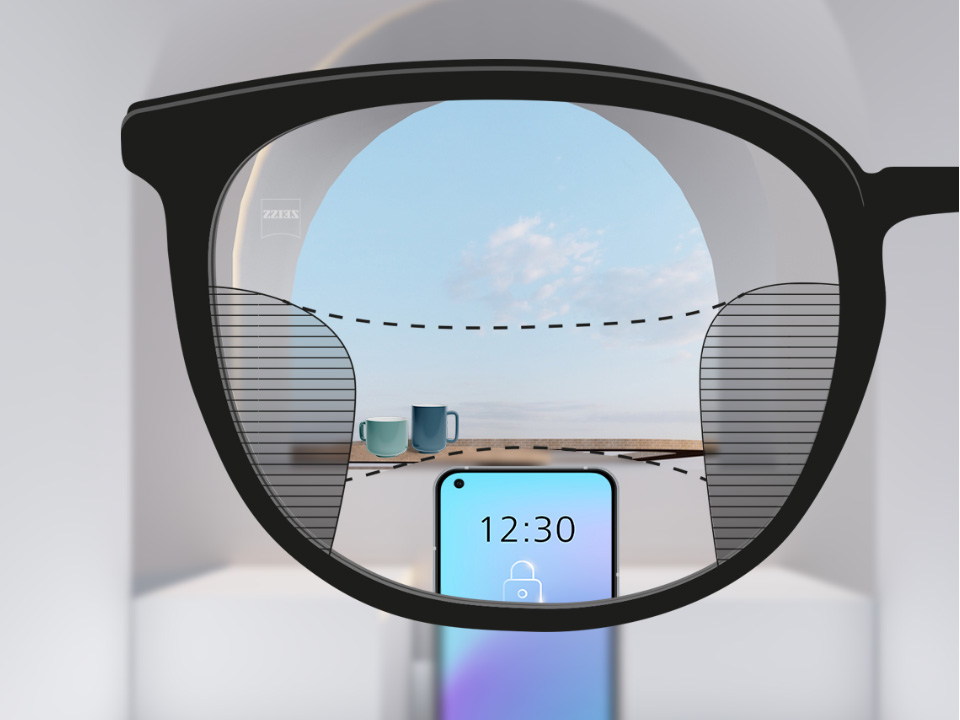
What are Progressive Lenses?
Definition and Functionality: How progressive lenses work
Progressive lenses, also known as multifocal lenses or no-line bifocals, are a type of eyeglass lens designed to correct presbyopia, a condition causing difficulty focusing on nearby objects as people age. Unlike traditional bifocals or trifocals with visible lines separating different vision zones, progressive lenses provide a seamless transition between distances. They incorporate different lens powers gradually across the lens surface, allowing for clear vision at near, intermediate, and far distances without abrupt changes. The top portion of the lens corrects for distance vision, the middle section for intermediate vision (like computer screens), and the bottom for near vision (reading). This smooth gradation minimizes the visible lines and distortion often associated with older multifocal designs.
Types of Progressive Lenses: Discuss different designs and their suitability for various needs
Several designs of progressive lenses cater to different visual needs and lifestyles. Some offer wider intermediate zones ideal for computer users, while others prioritize a broader distance vision area beneficial for drivers. The specific design chosen depends on factors like the wearer’s prescription, lifestyle, and individual preferences. For instance, a person who spends considerable time working on a computer might benefit from a progressive lens with an enlarged intermediate zone. Conversely, someone who drives frequently might prefer a design that optimizes distance vision clarity. High-index progressive lenses offer thinner and lighter options compared to standard progressive lenses.
Advantages of Progressive Lenses
Enhanced Visual Clarity: Describe improved vision at all distances compared to single vision lenses
Progressive lenses offer significantly improved visual clarity across all distances compared to single vision lenses, which only correct for one distance. This improved vision is due to the smooth transition between vision zones. This ensures comfortable vision for activities that require a variety of focal distances like reading, using a computer, and driving. The wearer experiences a more natural and less strained vision experience overall. Users often report a significant improvement in their overall quality of life thanks to the enhanced vision provided by these lenses.
Seamless Transitions: Explain the smooth transition between vision zones, minimizing distortion and adaptation issues
The key advantage of progressive lenses lies in their seamless transition between vision zones. Unlike bifocals with their distinct lines, progressive lenses feature a gradual power change across the lens surface. This minimizes distortion and jumpy vision, making adaptation significantly easier and more comfortable for the wearer. The smooth transition between near, intermediate, and distance vision eliminates the “jump” or “line” effect often experienced with traditional bifocals, enhancing visual comfort and reducing eye strain. This makes them a superior option for individuals seeking comfortable and natural vision correction.
Cosmetic Appeal: Highlight the absence of visible lines, making them aesthetically pleasing
Progressive lenses are aesthetically superior to traditional bifocals or trifocals because they lack the visible lines separating different vision zones. This enhances their cosmetic appeal, making them a more attractive option for those who prefer a more modern and stylish appearance. The absence of lines makes them a fashionable and discreet solution for vision correction, blending seamlessly into the frame design. This is a crucial aspect for many individuals considering progressive lenses as they desire both functional correction and an aesthetically pleasing look.
Disadvantages of Progressive Lenses
Adaptation Period: Discuss the time required to adjust to the lenses and potential initial discomfort
While offering numerous advantages, progressive lenses often require an adaptation period. New wearers may experience some initial discomfort, dizziness, or blurred vision as their eyes adjust to the gradual power changes across the lens. This adjustment period can vary from a few days to several weeks, depending on the individual. Patience and consistent wear are essential during this time. Some users find it helpful to gradually increase their wearing time to improve their adaptation rate.
Peripheral Distortion: Explain the potential for blurred vision in the peripheral areas, particularly at the top and bottom
One potential drawback of progressive lenses is the possibility of peripheral distortion. This refers to blurred vision in the peripheral areas of the lenses, particularly noticeable at the top and bottom. This is a result of the lens design and the way the different power zones are incorporated. However, modern progressive lens designs have significantly minimized this distortion.
Cost: Compare the price of progressive lenses to other vision correction options
Progressive lenses typically cost more than single vision lenses or traditional bifocals. The higher cost is due to the advanced technology and precision required in their manufacturing. However, the improved visual clarity and convenience often justify the added expense for many individuals. The price can also vary based on the brand, lens material, and additional features. If you’re considering progressive eye lenses, it’s wise to compare prices from multiple providers to get the best value. To find the best prices on progressive eye lenses and explore various options, visit https://www.mozaer.com/search?q=progressive eye lenses”>progressive eye lenses – finding the right pair will greatly enhance your visual comfort and daily life.
【Progressive Lens Alternatives: A Comparative Analysis】
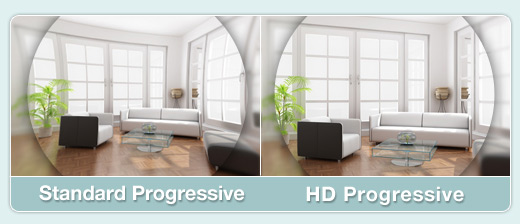
Single Vision Lenses
Functionality and Suitability: Describing Single Vision Lenses and their Appropriate Use
Single vision lenses correct for only one distance, either nearsightedness (myopia) or farsightedness (hyperopia). They are the simplest and most affordable type of eyeglass lens. They’re most suitable for individuals who primarily need correction for either distance vision or near vision, but not both. For example, someone who predominantly works on a computer might benefit from single vision lenses optimized for intermediate distances. However, individuals with presbyopia, requiring different prescriptions for near and far vision, will find single vision lenses inadequate for their needs. These lenses provide a single focal point, making them unsuitable for those needing clear vision at multiple distances.
Comparison with Progressive Lenses: Contrasting Visual Experiences and Lifestyle Suitability
Unlike progressive lenses offering seamless vision across multiple distances, single vision lenses only provide clear vision at a single focal point. This means frequent switching between glasses for near and far vision is necessary for presbyopic individuals. The convenience factor is a major difference: progressive lenses eliminate the need for multiple glasses, streamlining daily life. For individuals with presbyopia, the visual experience using single vision lenses is significantly less comfortable and efficient than progressive lenses. They offer better convenience and clearer vision across all distances, making them a superior choice for most.
Contact Lenses
Types of Contact Lenses: Exploring Various Contact Lens Options for Presbyopia
Contact lenses provide another alternative to eyeglasses, including options specifically designed for presbyopia. Multifocal contact lenses offer correction for both near and far vision, similar to progressive lenses. These come in various designs, including progressive addition lenses which mimic the gradual power change of progressive glasses. More advanced options like spiral contact lenses and autofocus contact lenses are continuously being developed to better address the challenges of presbyopia. These newer designs often claim to dynamically adjust the lens power to provide a more natural and convenient vision experience. However, individual effectiveness may vary.
Comparison with Progressive Lenses: Weighing Advantages and Disadvantages
Contact lenses and progressive lenses both address presbyopia, but each presents different advantages and disadvantages. Contact lenses offer a potentially more cosmetically appealing option, without the need for eyeglass frames. They also often provide a wider field of clear vision compared to progressive lenses. However, contact lenses require daily handling and cleaning, potentially causing discomfort or infections. Progressive lenses offer more convenience and are easier to maintain, although they might not offer as wide a field of clear vision and aren’t as cosmetically discreet. Ultimately, the choice depends on individual lifestyle and preferences. Cost can also be a significant factor, depending on the type and brand chosen.
Surgical Options
LASIK and other Procedures: Examining Surgical Vision Correction Options
LASIK and other refractive surgeries offer a permanent solution for vision correction, including presbyopia. Procedures like monovision, where one eye is corrected for distance vision and the other for near vision, are sometimes used to address presbyopia. Other techniques, like refractive lens exchange (RLE), replace the eye’s natural lens with an artificial one to correct presbyopia. These surgical options offer potential freedom from glasses and contact lenses.
Comparison with Progressive Lenses: Analyzing Long-Term Benefits and Risks
Surgical options provide a permanent correction for presbyopia, unlike progressive lenses. This eliminates the need for glasses or contact lenses, offering long-term convenience. However, surgical procedures carry inherent risks and potential complications, and might not be suitable for everyone. Progressive lenses provide a safe and reversible method of correction, though requiring ongoing use of the lenses. The decision to undergo surgery should be made after a comprehensive consultation with an ophthalmologist to weigh the long-term benefits and potential risks carefully against the advantages of a non-invasive solution such as progressive eye lenses. For more information and to find the right solution for your vision needs, check out https://www.mozaer.com/search?q=progressive eye lenses”>progressive eye lenses and explore available options.
【Choosing and Using Progressive Lenses】
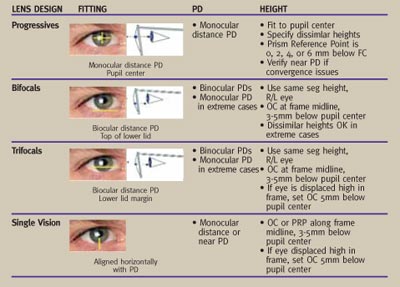
How to Choose Progressive Lenses
Factors to Consider: Individual Needs, Prescription, Lifestyle, and Budget
Choosing the right progressive eye lenses requires careful consideration of several factors. Your individual needs are paramount. Do you primarily need clear vision for near work, distance vision, or both? Your prescription, provided by your ophthalmologist or optometrist, will dictate the specific lens power required. This prescription details the degree of correction needed for nearsightedness (myopia), farsightedness (hyperopia), and astigmatism. Your lifestyle plays a significant role. Are you constantly switching between near and far vision? Do you spend long hours working on a computer? An active lifestyle might necessitate lenses with specific durability and scratch-resistance features. Finally, consider your budget. Progressive lenses range in price depending on the materials, features, and brand. Understanding these factors will help you make an informed decision.
Professional Guidance: Consultation with an Eye Care Professional
A consultation with a qualified eye care professional is crucial for selecting the appropriate progressive eye lenses. An optometrist or ophthalmologist will perform a comprehensive eye exam to determine your prescription and assess your individual needs. They will discuss your lifestyle and visual demands to recommend the most suitable lens type. The professional will help choose the right progressive addition lenses for your age and visual needs, considering aspects such as the size of the near and intermediate vision zones in the lens. Proper fitting is essential for optimal visual comfort and performance. Don’t hesitate to ask questions and discuss any concerns you may have. Their expertise will ensure you get the best possible progressive eyeglass solution tailored to you.
Progressive Lens Fitting and Adjustment
Importance of Proper Fitting: Measurements and Visual Comfort
Proper fitting of progressive lenses is crucial for achieving optimal visual comfort and performance. Accurate measurements of pupillary distance (PD) – the distance between the centers of your pupils – are essential for ensuring the lenses are positioned correctly in front of your eyes. Incorrect measurements can lead to eye strain, headaches, and difficulties focusing at different distances. The frame style also plays a significant role. The frame size and shape influence how well the lens corrects your vision. The eye care professional will adjust the frames to ensure proper alignment and minimize distortion. A poorly fitted frame can cause discomfort and negatively impact visual acuity. These aspects ensure your progressive lenses provide the intended benefit.
Addressing Common Problems: Headaches, Dizziness, and Adaptation
Some individuals experience temporary adjustments when adapting to progressive lenses. Headaches, dizziness, or eye strain are common initial side effects but usually subside as your eyes adjust. These issues often stem from needing time to get used to the gradual change in lens power across the lens surface. The gradual transition zones in progressive addition lenses take time to adapt to. It’s important to give your eyes time to acclimate to the new lenses. Your eye care professional can provide tips to ease the transition, such as starting with short periods of wear and gradually increasing the duration. They can address specific concerns you encounter, like difficulties focusing at certain distances. Persistent problems should be reported to your eye care professional immediately to explore other solutions, like adjustments to the frame or lens prescription. For a seamless experience, exploring various options is crucial, and you can find more at https://www.mozaer.com/search?q=progressive eye lenses”>progressive eye lenses to determine the best fit for your needs.
【Advanced Progressive Lens Technology & Future Trends】
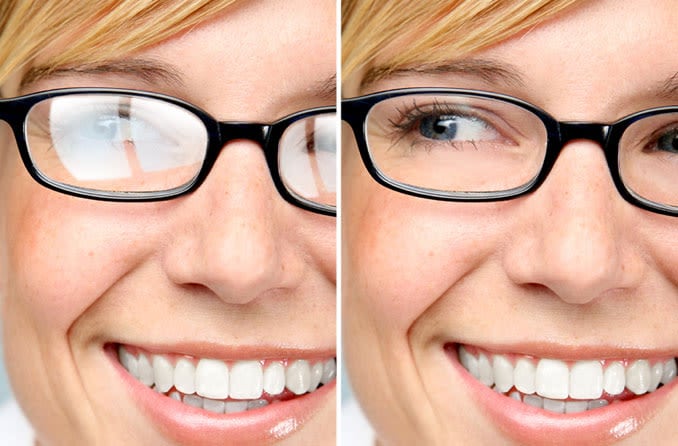
Progressive Lens Technology: High Index Lenses
High-index progressive eye lenses offer significant advantages in terms of thinness and weight. These lenses utilize materials with a higher refractive index, meaning they bend light more effectively than standard lenses. This characteristic allows for thinner and lighter lenses, particularly beneficial for individuals with strong prescriptions. The reduced thickness is aesthetically pleasing, making the lenses less noticeable in the frame. The lighter weight contributes to increased comfort, especially during extended wear. This is particularly important for those who wear their glasses throughout the day. High-index lenses are a superior choice for individuals seeking both visual correction and comfortable eyewear. For a comprehensive selection of high-index progressive lenses, you can explore options at https://www.mozaer.com/search?q=progressive eye lenses”>progressive eye lenses, where you’ll find various lens materials and designs to best suit your needs and prescription.
Progressive Lens Technology: Anti-Reflective Coatings
Anti-reflective coatings for progressive lenses significantly enhance visual clarity and reduce glare. These coatings minimize light reflection from the lens surface, resulting in clearer vision, especially in bright conditions or at night. This improvement is due to the reduction of unwanted light scattering and reflections that can cause visual discomfort and reduce visual acuity. Anti-reflective coatings minimize the appearance of distracting reflections, making the lenses less noticeable and improving overall aesthetic appeal. They are essential for reducing eye strain and improving visual comfort, particularly for those who spend significant time in front of digital screens. By reducing glare, these coatings improve contrast sensitivity and enhance visual performance. To find the right progressive lenses with anti-reflective coatings for your lifestyle, consult https://www.mozaer.com/search?q=progressive eye lenses”>progressive eye lenses for a better visual experience.
Future of Vision Correction: Autofocus Lenses and Smart Glasses
The development of autofocus lenses and smart glasses represents a potential paradigm shift in vision correction, offering a possible alternative to progressive eye lenses in the future. Autofocusing technology mimics the natural focusing ability of the eye, dynamically adjusting the lens power to provide clear vision at all distances. Research in this area continues to advance, with ongoing development of innovative materials and technologies enabling ever-more precise and responsive autofocus capabilities. Smart glasses integrate this technology with additional features, such as augmented reality overlays and other digital enhancements. While not yet widely available as a replacement for progressive lenses in 2025, this technology shows promise for providing a seamless and adaptable visual experience, eliminating the need for separate focal points for near and far vision. Further research and development will likely bring refined versions of these technologies to market in the coming years.
Future of Vision Correction: Research and Development
Ongoing research in vision correction promises further breakthroughs that will likely impact progressive eye lenses in the future. Scientists and engineers are constantly exploring new lens materials, coatings, and designs to enhance visual performance and comfort. This research focuses on improving aspects such as lens clarity, durability, and weight reduction. Areas of active investigation include developing even thinner and lighter lenses using advanced materials science, as well as exploring ways to optimize the transition zones in progressive lenses for a smoother visual experience. The pursuit of more personalized and adaptive lens designs promises to enhance the functionality and user experience of vision correction products such as progressive lenses. This ongoing research ensures that future progressive lenses will provide improved visual clarity, comfort, and performance.
【Frequently Asked Questions (FAQ) about Progressive Lenses】
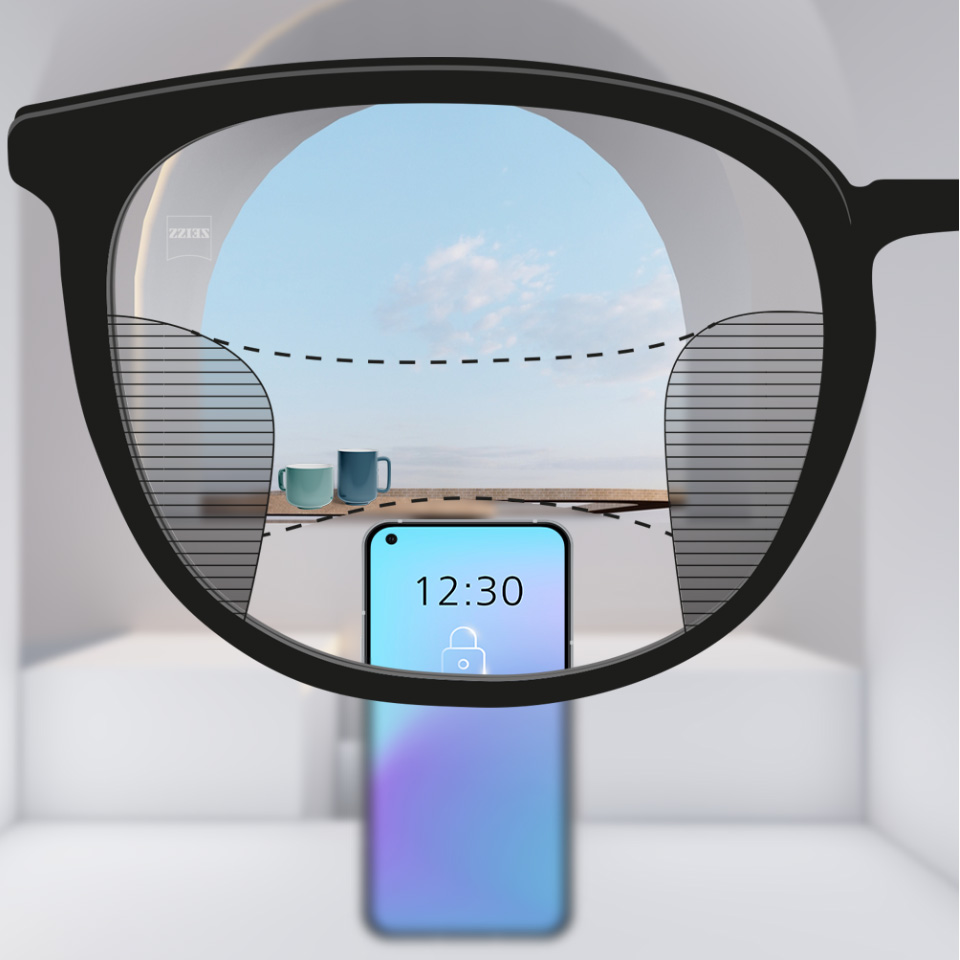
Do progressive lenses cause headaches?
Progressive lenses, while offering clear vision at multiple distances, can sometimes cause headaches, especially during the initial adjustment period. This is often due to the gradual power change across the lens surface, requiring the eyes to adapt to a new visual experience. Common causes include improper fitting, inadequate adaptation time, and pre-existing eye strain. The lens transition zones, where the power changes most rapidly, can be particularly problematic. Mitigating headaches involves gradual adaptation, ensuring proper lens fitting by a qualified optometrist, and taking breaks from prolonged near-work. Addressing any underlying eye strain through eye exercises or therapy can also help. If headaches persist, consultation with an eye care professional is recommended.
Are progressive lenses worth it?
Whether progressive lenses are “worth it” depends entirely on individual needs and circumstances. The advantages include eliminating the need for multiple pairs of glasses for near, intermediate, and distance vision, offering seamless transitions between distances, and providing a more natural visual experience. However, there are also disadvantages. The initial adjustment period can cause headaches or discomfort in some individuals. Progressive lenses typically cost more than single-vision lenses. The transition zones can sometimes cause image distortion or blurring, especially in the peripheral vision. Individuals with strong prescriptions or significant astigmatism may find the lenses less effective or more prone to distortions. Ultimately, weighing the convenience and improved vision against the cost and potential adaptation challenges is crucial in determining their suitability.
Progressive lenses for computer use, driving, and specific activities.
Progressive lenses function differently in various settings. For computer use, the intermediate zone of the lens is critical for comfortable viewing of a screen. Some progressive lens designs are optimized for digital devices, offering improved clarity and reduced eye strain at computer-viewing distances. Driving requires clear vision at distance, and certain progressive designs minimize distortion at the periphery for safer driving. For specific activities like reading, close-up work, or hobbies, it’s essential to discuss individual needs with an eye care professional to ensure proper lens selection. Lens options exist that are specifically designed to enhance vision during various tasks. Consider mentioning your needs during your eye examination.
Progressive lenses cost comparison and insurance coverage.
The cost of progressive lenses varies significantly depending on the lens material, features (like anti-reflective coatings or high-index materials), and the frame chosen. In 2025, a general price range might be from $200 to $800 or more per pair. High-index progressive lenses, offering thinner and lighter lenses, naturally command higher prices. The inclusion of features like anti-reflective coatings also increases the overall cost. Many vision insurance plans offer some coverage for progressive lenses, but the extent of coverage varies widely. It’s crucial to check your individual insurance policy details to understand the specific benefits and limitations, as deductibles and co-pays will significantly impact the out-of-pocket cost.
Progressive lenses for astigmatism and other vision conditions.
Progressive lenses are suitable for individuals with astigmatism, although the lens design and material selection may need adjustments to accommodate the astigmatic correction. The presence of astigmatism might increase the complexity of the lens design and thus the cost. For other vision conditions, such as presbyopia (age-related near vision loss) or hyperopia (farsightedness), progressive lenses offer a comprehensive solution by correcting vision at various distances simultaneously. However, it’s crucial to consult an eye care professional to determine the suitability of progressive lenses based on the specific vision condition and its severity. They can assess your individual needs and recommend the most appropriate lens type and design.
Best progressive lenses brands and online retailers.
Numerous reputable brands manufacture progressive lenses. Choosing a brand often depends on individual preferences and the recommendations from eye care professionals. Online retailers offer convenience and sometimes competitive pricing, although it’s crucial to ensure the retailer’s legitimacy and customer protection policies. To find trustworthy online options, it’s advisable to consult reviews and ratings from independent sources and to be cautious of overly low prices. For additional online retailer options you may find some reputable options suggested on sources like Forbes Vetted.
Myopia management and progressive lenses, Fuchs endothelial corneal dystrophy and progressive lenses.
The relationship between myopia management and progressive lenses is complex. While progressive lenses themselves don’t directly manage myopia, they can be incorporated into a broader myopia management strategy. Research is ongoing into lens designs that might offer some myopia control benefits, but these are not yet widespread in 2025. Fuchs endothelial corneal dystrophy is a progressive disease affecting the cornea, and its impact on progressive lens suitability depends on the severity of the condition. Individuals with Fuchs endothelial corneal dystrophy should consult an ophthalmologist to determine if progressive lenses are a suitable option, as the disease may affect visual acuity and overall suitability for certain lens designs. Further research and collaboration with eye care professionals are recommended to navigate the complexities of these conditions and lens choices. For a wide selection of progressive lenses to meet your needs, explore the options at https://www.mozaer.com/search?q=progressive eye lenses”>progressive eye lenses. This resource can help you find the perfect progressive lenses to address your specific vision needs.
Choosing the Right Progressive Lenses for You
This comprehensive guide has explored the intricacies of progressive eye lenses, highlighting their advantages and disadvantages. We’ve compared them to alternatives like single vision lenses, contact lenses, and surgical options, providing a balanced perspective for informed decision-making. Remember, the key to successful progressive lens use lies in careful consideration of several factors.
Firstly, individual needs and prescription are paramount. A thorough eye examination by a qualified optometrist or ophthalmologist is crucial to determine your specific vision needs and ensure the correct prescription. Your lifestyle and visual demands significantly impact the type of progressive lens you should choose. Do you work predominantly at a computer? Do you drive frequently? Your answers will guide the selection of lenses with appropriately sized intermediate or distance vision zones.
Moreover, budget and available insurance coverage must be factored into the decision-making process. Progressive lenses can represent a significant investment, and understanding insurance coverage is essential to managing the cost. Finally, choosing a reputable brand and retailer ensures high-quality lenses and customer support. Consider seeking recommendations from friends and your eye care professional when determining the best brand and retailer for your needs.
Once you’ve chosen your lenses, remember that an adaptation period is normal. Be patient and give your eyes time to adjust. If you experience persistent discomfort or problems, such as headaches or blurred vision, consult your eye care professional immediately for adjustments or alternative solutions. Don’t let these initial difficulties discourage you – the long-term benefits of clear, comfortable vision at all distances make progressive lenses a worthwhile investment for most.
Remember to factor in the latest advancements in progressive lens technology. High-index lenses offer thinness and lightness, while anti-reflective coatings improve clarity and reduce glare. Furthermore, advancements in lens design continuously strive to reduce peripheral distortion and improve the overall user experience. Staying updated with the latest advancements and consulting with your eye care professional is vital to ensuring you benefit from the most effective and comfortable progressive lens technology available.
For more information and to find the best prices on progressive eye lenses and explore various options, visit https://www.mozaer.com/search?q=progressive+eye+lenses. Finding the right pair will greatly enhance your visual comfort and daily life.
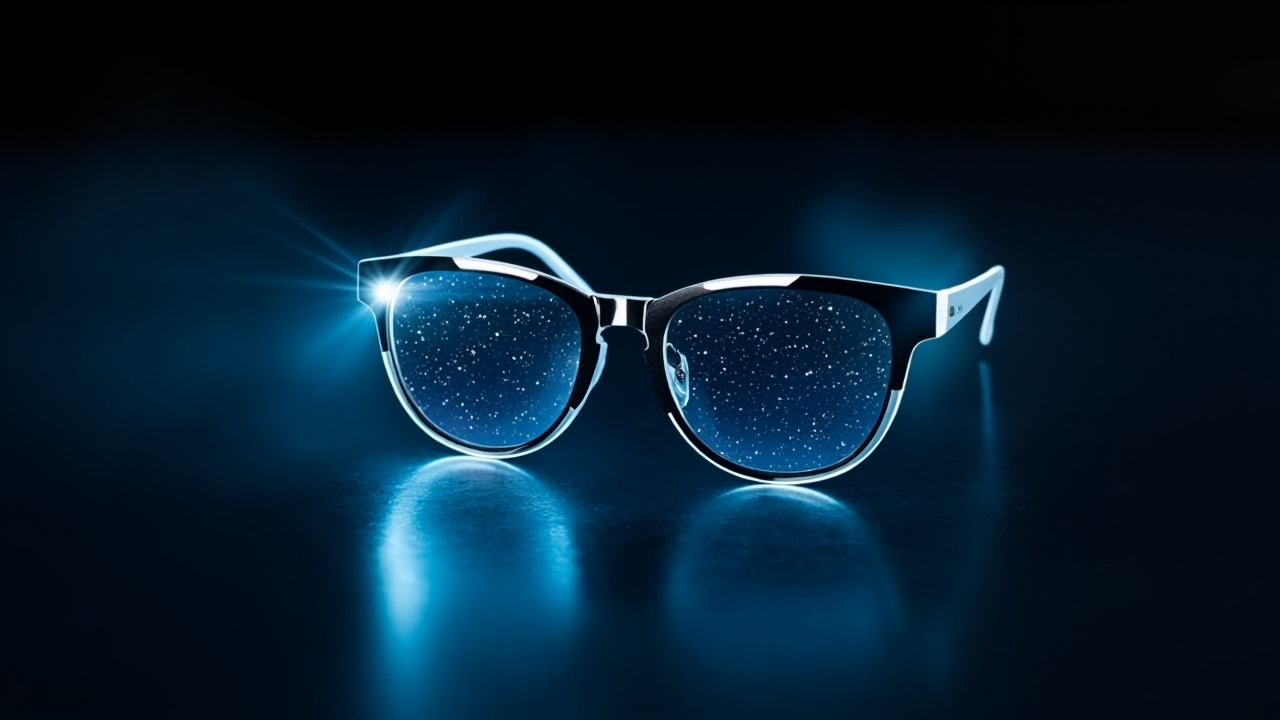
Leave a Reply